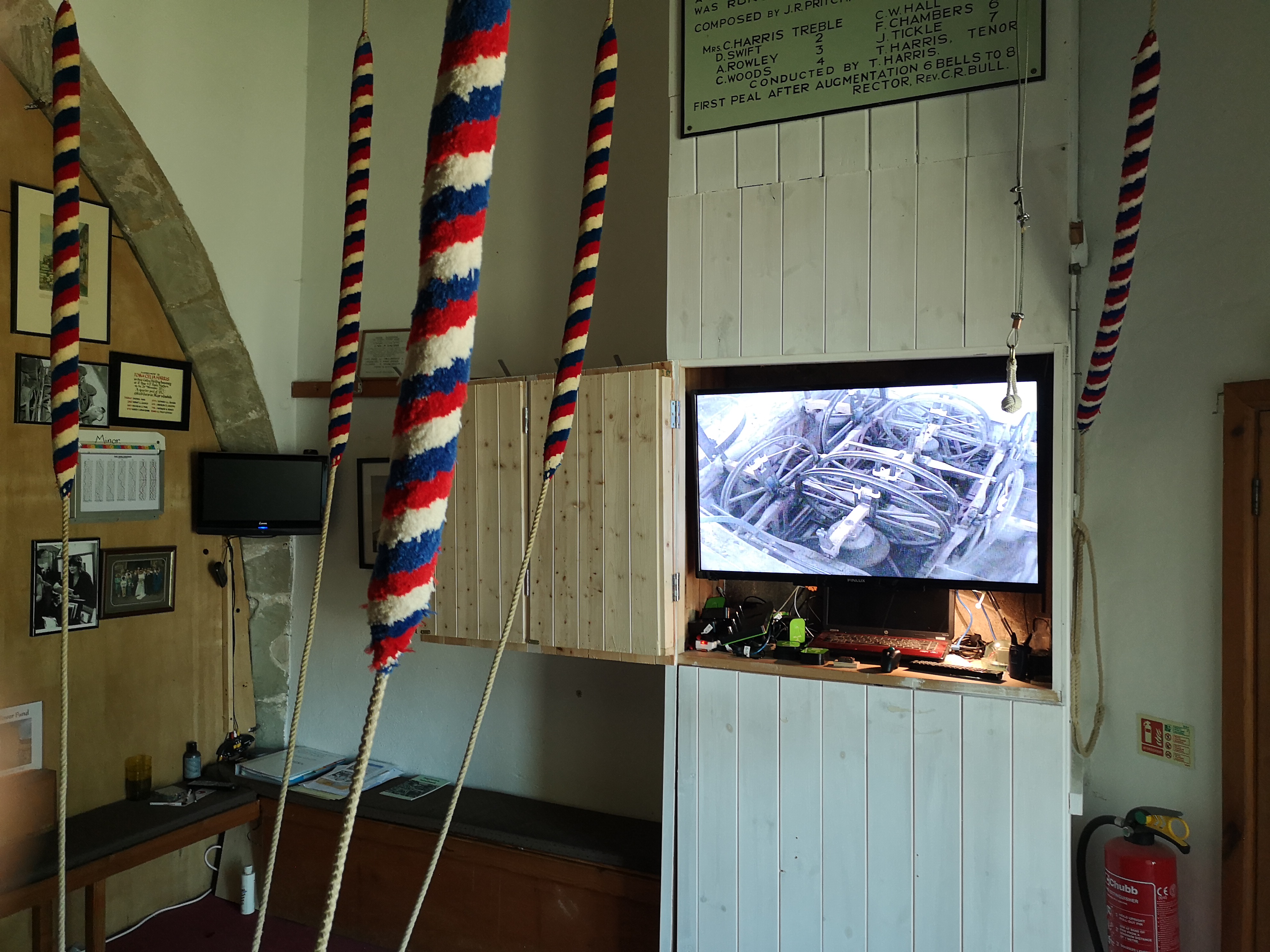Teaching with a simulator at the Hathern Hub
What is harder to master: quantum physics or rocket science?
Following on from Barbara Le Gallez’s article in February ART WORKS on Stretham REC, where the title posed “Harder than Quantum Physics?” one can add:
“Neither of them can be completely "mastered". There can always be better engines and fuels for rockets. But, rockets are harder to get good at building.” Davis Brookshire, 2015
I think the same is true of bell ringing! It’s also part of the challenge; you never stop learning … that’s what I love about! It’s also what makes it a challenge to teach! That’s where, for me, ART comes in, bringing some structure, standards and order to things in a consistent way.
I attended an ART Day Course some time ago now and have gone on to set up St Peter & St Paul’s church tower Hathern, Leicestershire with a full simulator facility using Belfree sensors and have all three PC-based simulator software installed (I mostly use Virtual Belfry). The tower also has a CCTV setup to allow the learner to watch their bell during ringing up and down and normal ringing. I have found this invaluable in the early stages so the student can make the connection between the rope and what is happening at the other end, to the bell. We were one of the first ART Hubs, but there is only me teaching there.
Hathern is part of a United Benefice of five churches, all with bells and all needing to find ringers. The way I work is to do “taster” sessions for people to try to tempt new learners, and to concentrate on teaching Learning the Ropes (LtR) Levels 1 and 2 to people from any of the villages. Once they are able to handle competently and safely ringing at least rounds with the simulator I then introduce them to their local tower in the benefice and let the local tower captains work from there. Primarily I have worked with Kegworth and have been able to keep an eye on progress and to record this for the ringers in their Personal Progress Logbooks. Thus we work in a co-operative way.
The simulator facilities allow for prolonged learner practice without disturbing the neighbours and I use them to develop ringers to being able to ring rounds before introducing them to “real live” ringers! I offer to teach ringers to this LtR Level 2 for all the towers in our Benefice and have passed on a number in this way, as well as continuing with our own tower’s ringers with my first LtR Level 5 student graduating recently. Some people have left the village and have gone on to continue their ringing development in other towers which I still see as an achievement.
In addition to this bell handling teaching, I have also provided remedial help for handling and striking issues with the aid of the simulator for other towers in our district and in the Leicester Diocesan Guild. I also find the simulator very useful for helping people with method issues, where we set up repeated chunks of work that could be repeated over and over again until they are well learnt and then they can be put together to re-form the method.
While we can silence all 8 bells for full simulation what I originally envisaged was the use of a single portable sensor that could be used in multiple towers, was relatively cheap and could be treated as plug and play set up as a “pop-up” simulator.
My vision is still to have a few sets of single sensors in the Guild so people can borrow them while they are teaching LtR Levels 1 & 2 and use the simulator for striking feedback, learning rounds and Plain Hunt with a “perfect” band around them! The transition to real people then comes as a surprise because it’s often found to be easier!

Tony Croft